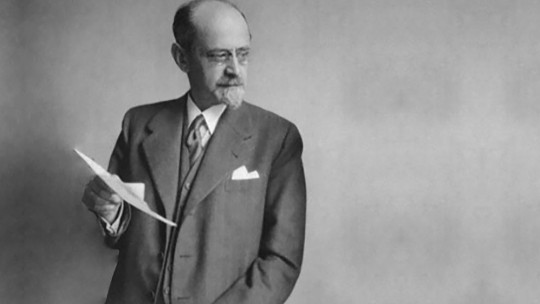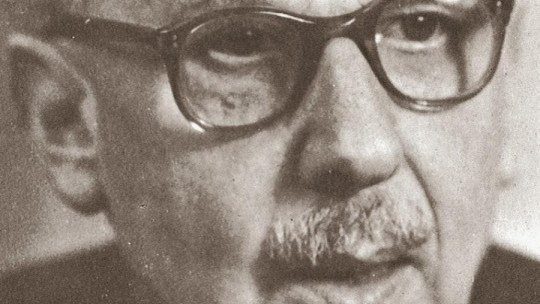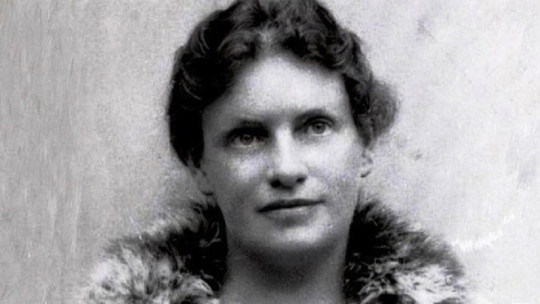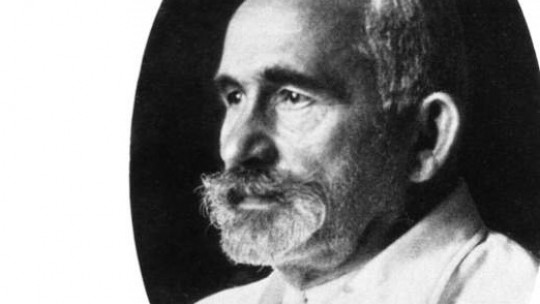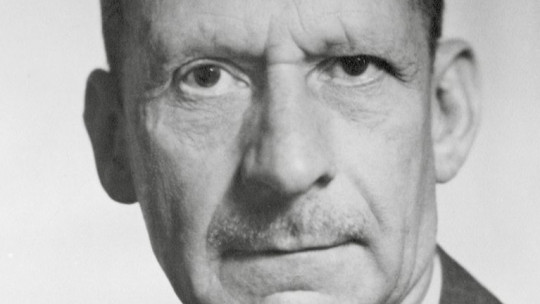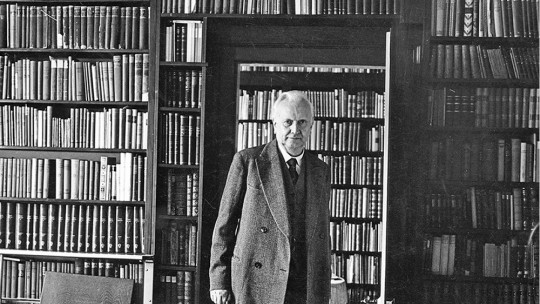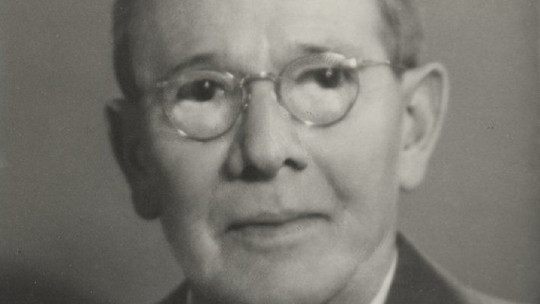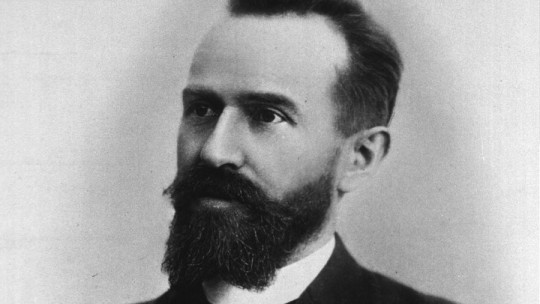
The history of psychopathology is full of important figures who made numerous contributions to the field of psychology and mental health. One of them is Eugen Bleuler (1857-1939), the Swiss psychiatrist who coined the term “schizophrenia,” which included a group of heterogeneous disorders.
Bleuler also talked about the symptoms of schizophrenia, and differentiated them into two groups: the basic ones and the accessory ones. In this article you will find a brief biography of Eugen Bleuler, covering his educational and work career and knowing the contributions he made, especially in relation to schizophrenia.
Eugen Bleuler: beginnings
Paul Eugen Bleuler (1857-1939) was a Swiss psychiatrist who was born in 1857 in a city near Zurich, Zollikon, and who died in the same city in 1939, at the age of 82. Son of Johann Rudolf Bleuler and Pauline Bleuler-Bleuler, he studied Medicine at the University of Zurich. There, years later, he served as a professor of psychiatry.
In 1881 He graduated as a doctor and began working as an assistant doctor at the Waldau Psychiatric Clinic from Bern, Swiss city. There he worked for Gottlieb Burckhardt, another important Swiss psychiatrist. Three years later, in 1884, Bleuler left that clinic and began to travel to continue training as a doctor, with figures such as Jean-Martin Charcot, in Paris, Bernhard von Gudden, in Munich, and in London.
After these trips he returned to his native country, specifically to Zurich, and worked as an internal psychiatrist at the Burghölzli University Hospital (Zurich). Subsequently, in 1886, Eugen Bleuler took on the position of director of a Psychiatric Clinic in Rheinau.
Bleuler’s work there was very important, since he improved the conditions of institutionalized patients. Finally, twelve years later, Bleuler He was appointed director at the previous hospital where he had worked, Burghölzli University Hospital Eugen Bleuler paid special attention to the patient’s global clinical status, that is, he observed all the symptoms that the person presented at a specific time, and made a global assessment.
Freud’s influence
Eugen Bleuler followed closely in the footsteps of Sigmund Freud, being influenced by his work and his contributions to the field of psychology and mental health. Besides, He was especially interested in hypnosis
Bleuler believed that complex mental processes could be unconscious, as defended by Freud’s psychoanalysis. That is why Bleuler was interested in having his employees at the Burghölzli Hospital study these types of processes from a psychoanalytic perspective.
However, although Eugen Bleuler he allowed himself to be nourished by psychoanalysis, and followed this theoretical orientation for much of his academic and professional career, he ended up distancing himself from it, because he did not share its principles with as much determination as Freud. Bleuler considered this psychological current as excessively dogmatic.
Contributions to mental health research
Some of the most relevant works of Eugen Bleuler were: Early dementia. The Schizophrenia group (1993) and Treaty of Psychiatry (1924) (1st Spanish edition). Regarding his contributions, Bleuler He is especially known for coining the terms “schizoid,” “schizophrenia,” and “autism.”
To arrive at the term schizophrenia, he started from dementia praecox proposed by Emil Kraepelin, a German psychiatrist and the first to define what would later be called schizophrenia.
Term of “schizophrenia”
Specifically, Eugen Bleuler introduced the concept of “schizophrenia” worldwide, and coined the term, at a conference in Berlin on April 24, 1908. He did so through a treatise that he prepared, and which was based on the study of 647 patients he had cared for.
The term “schizophrenia”, for Bleuler, referred to a dissociation of normal brain functions that appeared in this type of patients The word comes from Greek, and means “division” or “splitting” (schizo) and “mind” or “reasoning” (phrenia).
According to the author, in people with schizophrenia, there was a separation or fissure between ideas (thought) and feelings ; Thus, he defended that these two elements were unrelated, separated or disintegrated.
Schizophrenia group
For Eugen Bleuler, the concept of “schizophrenia” encompassed the forms of dementia praecox already proposed by Kraepelin, along with juvenile dementia, acquired idiocy, catatonia and hebephrenia. Thus, Bleuler’s term “schizophrenia” replaced Kraepelin’s “dementia praecox,” and included a group of disorders and not just one, as Kraepelin defended
Bleuler insisted a lot on the heterogeneity of the concept of schizophrenia, since his “group of schizophrenia” included very heterogeneous disorders from one patient to another.
simple schizophrenia
Bleuler, in addition, also considered the subtypes of schizophrenia: paranoid, catatonic and hebephrenic, which had already been introduced by E. Kraepelin. These subtypes no longer appear in the DSM-5, but do appear in the DSM-IV-TR. As an important contribution, Eugen Bleuler added a new subtype to these subtypes: simple schizophrenia.
Simple schizophrenia is characterized because the patient has never presented positive symptoms (psychotic), but nevertheless, he or she does manifest negative symptoms such as avolition, affective flattening or apathy.
Currently, this subtype of schizophrenia can be found as an official diagnosis in the ICD-10 (International Classification of Diseases) and in the annex of the DSM-IV-TR (Diagnostic Manual of Mental Disorders). In the DSM-5, however, it is no longer mentioned.
Bleuler’s 4 A’s
Another very interesting contribution that Eugen Bleuler made was that of the “4 A’s” of schizophrenia. These 4 A’s They referred to the basic symptoms of the disorder, and the accessory symptoms
For Bleuler, the basic symptoms were those that are always present in schizophrenia (not all of them have to be present); That is to say, according to him, manifesting one of them was already indicative of suffering from the disorder. Accessory symptoms, however, do not always have to appear.
The 4 Aes (basic symptoms) indicate the letter (A) with which the four symptoms begin, which were the following:
1. Lack of Association
Is the lack of association between the ideas expressed by the patient ; That is, it is an alteration in thinking that is translated into language through inconsistencies, illogicality, etc.
2. Flattened affect
It is a negative symptom consisting of the absence of any emotional or affective expression (or the practical absence). The patient seems “as if he didn’t feel anything.”
3. Ambivalence
Ambivalence manifests itself in the patient’s behavior, which appears somewhat incoherent, disorganized, “from one side to another”, etc. Today we would translate it as disorganized behavior, a typical positive symptom of schizophrenia.
4. Autism
Finally, the 4th A proposed by Eugen Bleuler is Autism; thus, the patient appears distant, as if “locked in his world”, isolated with very restricted interests, etc.
Accessory symptoms
The accessory symptoms proposed by Bleuler were: delusions, hallucinations, negativism, language alterations, somatic symptoms and catatonia. That is to say, only positive symptoms according to the classification of symptoms of schizophrenia.
Eugenics
An important fact about Eugen Bleuler that is also worth commenting on is that defended forced eugenic sterilization of people with a diagnosis of schizophrenia (or with a predisposition to suffer from it).
This involved sterilizing these people without their consent, and without prior medical or clinical justification. Eugenics, for its part, is a current, or a philosophy, that defends the “perfection” of the human species through the application of the biological laws of heredity.
Bleuler believed that this would prevent the perpetuation of the disorder, thus avoiding the “racial deterioration” of the human species. These ideas were expressed in his work “Treatise on Psychiatry”, which dates from 1924 (1st Spanish edition).

